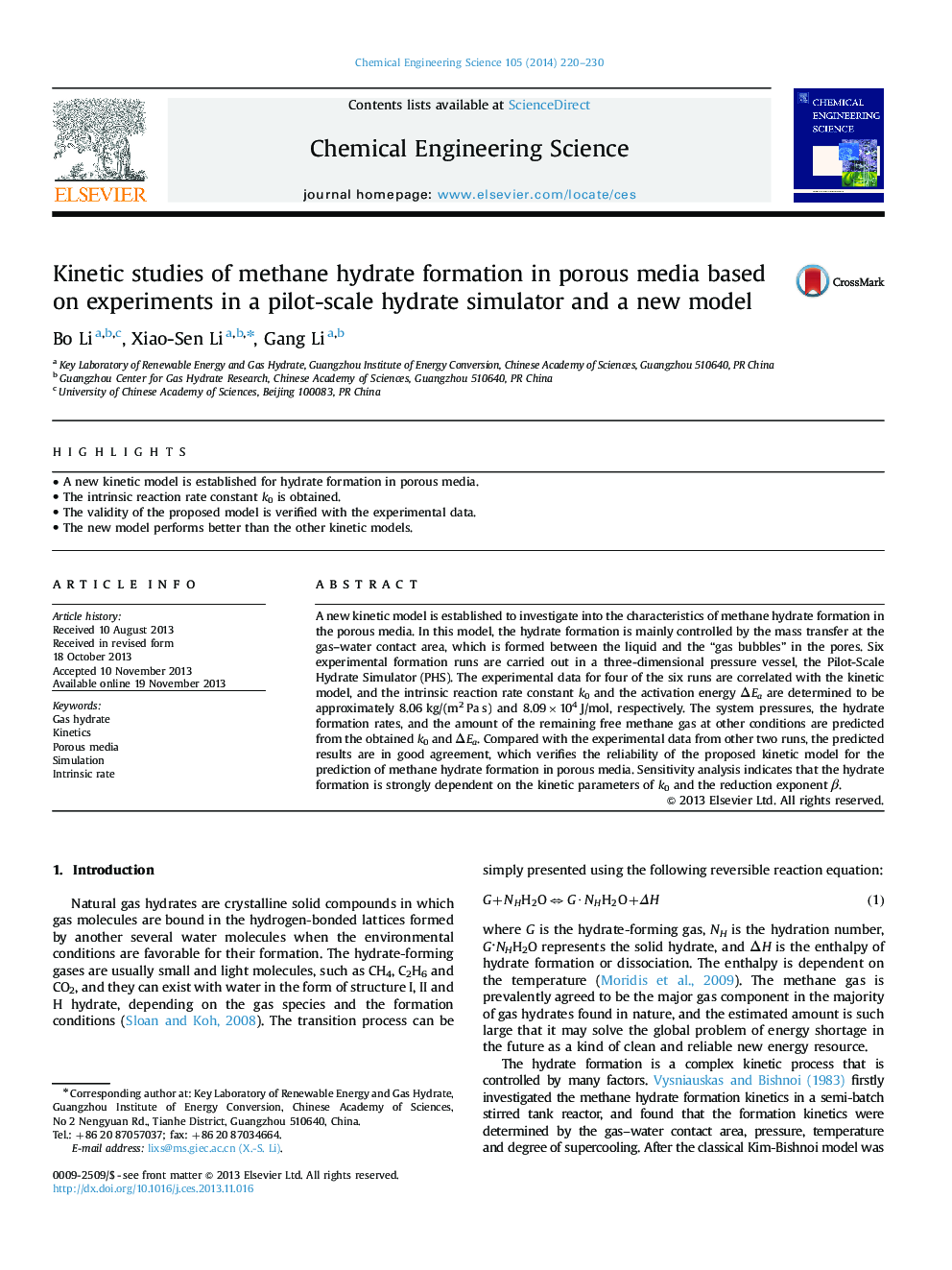| Article ID | Journal | Published Year | Pages | File Type |
|---|---|---|---|---|
| 154992 | Chemical Engineering Science | 2014 | 11 Pages |
•A new kinetic model is established for hydrate formation in porous media.•The intrinsic reaction rate constant k0 is obtained.•The validity of the proposed model is verified with the experimental data.•The new model performs better than the other kinetic models.
A new kinetic model is established to investigate into the characteristics of methane hydrate formation in the porous media. In this model, the hydrate formation is mainly controlled by the mass transfer at the gas–water contact area, which is formed between the liquid and the “gas bubbles” in the pores. Six experimental formation runs are carried out in a three-dimensional pressure vessel, the Pilot-Scale Hydrate Simulator (PHS). The experimental data for four of the six runs are correlated with the kinetic model, and the intrinsic reaction rate constant k0 and the activation energy ΔEa are determined to be approximately 8.06 kg/(m2 Pa s) and 8.09×104 J/mol, respectively. The system pressures, the hydrate formation rates, and the amount of the remaining free methane gas at other conditions are predicted from the obtained k0 and ΔEa. Compared with the experimental data from other two runs, the predicted results are in good agreement, which verifies the reliability of the proposed kinetic model for the prediction of methane hydrate formation in porous media. Sensitivity analysis indicates that the hydrate formation is strongly dependent on the kinetic parameters of k0 and the reduction exponent β.
